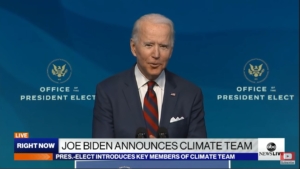Trumping Disclosures, Failed Fight for $15, and GOP’s Structural Edge
Here’s What You Need To Know
Lost among the clamor for President Trump’s tax returns is the release of an annual public document filed by President Trump, along with all other Administration appointees: the Executive Branch Personnel Public Financial Disclosure Report. Members of Congress, and candidates for Federal offices file very similar forms as well. You can see President Trump’s disclosure report, on which he reported assets of at least $1.4 billion, an income of at least $596.3 million, and liabilities of at least $315 million, here.
At Delve, we regularly review such forms in the course of preparing vulnerability studies and opposition research reports for our clients. So to help keep loyal TL;DR readers one step ahead of the pack, we’ve put together this primer on navigating these financial disclosure reports.
- What’s On The Form, And What Isn’t? Personnel financial disclosures detail all of a person’s assets, liabilities, and sources of income, along with those of their spouse and dependent children. These forms also list all honorary positions, gifts, and sponsored travel. However, as discussed in greater detail below, these disclosures only provide a range of income and net worth, rather than exact figures. Despite these shortcomings, personnel financial disclosures offer valuable insights into a public official’s finances.
- Range Of Net Worth: On a personnel financial disclosure form, by subtracting the person’s minimum liabilities from their maximum assets, you can obtain a rough estimate of their maximum net worth. Likewise, by subtracting the person’s maximum liabilities from their minimum assets, you can obtain their minimum net worth. However, this approach cannot provide the full picture because it only measures a potential range of net worth. So, for most candidates, the filing can give a good picture of where their net worth is broadly, but it also presents significant limitations for a person like Trump whose assets and liabilities could far exceed the top bracket of $50 million. In addition, certain assets and liabilities, like personal residences and mortgages on them, along with amount of spousal income, are excluded from reporting requirements.
- Controversial Investments, Debts, And Sources Of Income: Since the form details the individual’s investments, debts, and sources of income, an analysis may reveal whether that person is financially linked to any controversial activity or has conflicts of interest that will make it difficult for them to serve in a public role in an ethical manner. This information is also notable if they are invested in anything that contradicts their policy positions or campaign message. For example, a candidate running on an environmentalist platform that is invested in oil companies may be vulnerable to charges of hypocrisy.
- Questionable Gifts, Sponsored Travel, And Honorary Positions: Filers are also compelled to list any positions in organizations they hold, as well as any gifts or sponsored travel they have received. This information can reveal if they are associated with or are receiving support from any controversial groups. In addition, if the individual has received gifts or sponsored travel, they may be receiving personal favors from sources with questionable motives.
- Timing Is Key: Just looking at what the assets and liabilities are does not tell the full story. Another critical detail is when they were bought and sold. For example, if a member of Congress on a committee covering financial entities sold bank stocks right before a company’s stock crashed, it raises the possibility they had insider knowledge from their position. In addition, changes in net worth and income year-to-year also can be important to look at. If a government official became significantly wealthier after taking office it brings up more questions about how they made this money.
New You Can Use
THE REAL MINIMUM WAGE IS $0
For several years, left-wing groups and progressive Democratic candidates have been pushing to increase the minimum wage to $15 across the country. Seattle was one of the few cities to relent and adopt this policy at the municipal level. A new study by University of Washington economists, commissioned by the City of Seattle, shows the costs of this policy for low wage workers have been three times higher than its benefits.
Subscribe to Receive Insights
"*" indicates required fields
Many employers responded to the minimum wage increase by laying off workers, reducing their hours, and forgoing new hiring. The UW economists estimate these changes have cost the average low income worker $125 a month. The findings once again demonstrate how policies that are meant to help the poor through government mandates can often have the opposite effect – and could seriously undercut a major talking point for progressive Democratic candidates.
THE GOP’S STRUCTURAL EDGE
A new analysis from The Associated Press demonstrates one reason why Democrats face an uphill battle to take back the House in 2018. Using a statistical method to quantify partisan advantage in the design of Congressional and state legislative districts, the AP study found Republicans have the advantage in four times as many state House or Assembly districts as the Democrats. In addition, Republicans have the advantage in three times as many U.S. House districts in the two dozen most populated states as the Democrats. As a result, the AP estimates that Republicans won as many as 22 additional U.S. House seats in 2016 than would have been expected given their average vote share nationally.
This outcome is the direct result of the Republican efforts to build strong legislative majorities and control of Governors’ offices in order to control Congressional redistricting efforts in a majority of states. Democrats have learned from their 2010 failures, though, and are already gearing up to secure a more favorable redistricting process after the 2020 census, led by President Obama and Eric Holder. The results of 2018 gubernatorial and state legislative races will be critical as to who controls the 2020 redistricting process across the country.
DEMS DENY SPEAKING PRIVILEGES
During a recent hearing before the Senate Committee on Homeland Security and Governmental Affairs, aimed at discussing the ideology of political Islam, or Islamism, a number of alleged leaders in the global women’s rights movement effectively shut out the testimony of two women who should really be their allies. Ayaan Hirsi Ali and Asra Q. Nomani are both scholars who were born into Muslim families and now devote time to urging their faith to reform. Specifically, they call for modern Muslims to condemn abuses against women – such as honor killings, child marriages, polygamy, sex slavery, and female genital mutilation – performed in the name of Islam.
Despite these efforts seeming to be entirely in sync with the women’s rights positions of Democratic Sens. Kamala Harris, Heidi Heitkamp, Maggie Hassan, and Claire McCaskill, none of them asked either Ali or Nomani a single question during the hearing. Instead, the Senators chose to object to Ali and Nomani’s testimony and claimed it distorted the true nature of Islam. This is just the latest incident of Democratic politicians choosing to ignore issues they claim to care deeply about simply because the facts of the situation do not fit into their political ideology.
REPUBLICAN HEALTHCARE REFORM THAT WORKED
During his tenure, President Obama repeatedly tried to credit Obamacare for the slowdown in the growth of health care spending. However, this trend actually began in 2003, long before the passage of Obamacare. Plus. this decline has largely taken place in Medicare and employer-based coverage, the two areas least impacted by Obamacare. The phenomenon is more likely attributed to reforms passed by President Bush, including the Medicare Part D drug program and making Health Savings Accounts tax deductible for patients in employer-based plans.
Medicare Part D, which allows beneficiaries to select from competing plans offered by private insurance companies, reportedly has accounted for over 60 percent of the slowdown in Medicare benefit payments since 2011. The drug benefit and other Medicare reforms, such as “Welcome to Medicare” check ups, that were signed into law by President Bush placed an emphasis on addressing health issues earlier to avoid more expensive treatment later. So as Republicans once again seek to tackle healthcare reform, it is worth noting that the last time the GOP took on the subject successfully, they focused on ways to deliver better treatments at lower costs for patients and insurance providers.
THE EMERGING AGE OF TECH CONGLOMERATES
Corporations that are made up of several seemingly unrelated businesses, or conglomerates, have often been thought of as relics of the past. However, Amazon’s recent $13.4 billion purchase of Whole Foods highlights how major tech companies have become the conglomerates of the 21st century. Other large tech corporations, like Google – which owns Android, YouTube, Waze, and Nest Labs – or Facebook – which owns Instagram, WhatsApp and Oculus VR – have also arguably become conglomerates.
As these companies continue to grow, they are likely to attract even greater scrutiny from regulators as governments seek to limit their market influence. This dynamic has already begun to take shape in Europe, where regulators have repeatedly challenged allegedly anti-competitive business practices by Google, Apple, Amazon, and others. Even in the U.S., some policy thinkers have begun calling for companies like Amazon to be broken up. It seems only a matter of time before U.S. regulators begin to target them as the new robber-barons. Even the Trump Administration, despite all of its deregulatory zeal, has begun tightening restrictions on H1-B visas and other favored policies of the tech elite.



